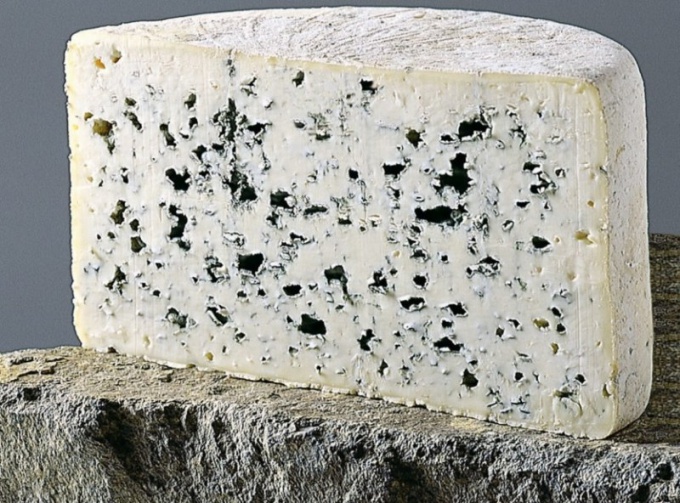The names of the cheeses
The most popular mold cheeses are brie and Camembert. These French white cheese with a soft crust and a velvety gray shell noble rot is recommended for the first acquaintance with such products. Their taste and appearance are not much different from each other, but any Frenchman is able to distinguish between them in just a few seconds.
Brie cheese has a proud status of the king of cheeses and cheese of kings, and its name comes from the eponymous French province.
Brie and Camembert are perfectly combined with ripe pears, figs, quince, grapes, peaches, cherries, raisins, walnuts and almonds. Gourmets also eat them with meats, ripe tomatoes, fresh homemade bread and herbs – from Basil to dill.
Blue cheese, unlike brie and Camembert, have a surface mold crust, it forms a marble pattern inside the head, giving the cheese a rich spicy taste and spicy aroma. The most classic and well-known cheese with blue cheese is Roquefort, with the alternative being the less expensive cheeses like Danish Danish blue, English Stilton, Italian Gorgonzola, German DorBlu and bergader and French Bleu d'auvergne. Blue cheeses combined with fruit, custard, honey, crackers, celery, apples and dark chocolate.
How to choose a quality moldy cheese
Brie and Camembert should have a slight mushroom smell of penicillin, whereas the sharp smell of ammonia indicates a stale product. In these cheeses is allowed only a slight bitterness and a slight moisture of the crust, which says the correct storage of the product. Curd, brie or Camembert should be gentle, uniform and oily.
An indicator of poor quality of moulds and cheese with a white crust is the presence of voids in the cheese mass.
Blue cheese should have a delicate, a bit frail by mass of uniform consistency. They should be stored in waxed paper or baking foil at a temperature of from 4 to 6оС is necessary that the cheese mould spores do not spread to other products, and the cheese doesn't dry out.
The meal should always finish with cheese, and not to begin with its use. Tasting of cheeses with mold should start with a gentle soft varieties, and finish – solid varieties with a spicy sharp taste.
